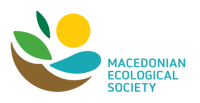Submissions
Submission Preparation Checklist
As part of the submission process, authors are required to check off their submission's compliance with all of the following items, and submissions may be returned to authors that do not adhere to these guidelines.- The submission has not been previously published, nor is it send to another journal for consideration (or an explanation has been provided in Comments to the Editor).
- The submission file is in OpenOffice, Microsoft Word, or RTF document file format.
- The submission is in accordance with the updated "Author Guidelines".
- The text adheres to the stylistic and bibliographic requirements outlined in the Author Guidelines.
- Author(s) agree with the copyright policy of the Macedonian Journal of Ecology and Environment.
Articles
Section default policyCopyright Notice
Macedonian Journal of Ecology and Environment applies the Creative Commons Attribution 4.0 International ![]() license to articles and supplementary material we publish. If you submit your paper for publication to Macedonian Journal of Ecology and Environment, you agree to have the CC BY license applied to your work. Under this Open Access license, you as the author agree that anyone can reuse your article in whole or part for any purpose, for free, even for commercial purposes. Anyone may copy and redistribute the material in any medium or format as long as the author and original source are properly cited. This facilitates freedom in re-use and also ensures that Macedonian Journal of Ecology and Environment content can be mined without barriers for the needs of research.
license to articles and supplementary material we publish. If you submit your paper for publication to Macedonian Journal of Ecology and Environment, you agree to have the CC BY license applied to your work. Under this Open Access license, you as the author agree that anyone can reuse your article in whole or part for any purpose, for free, even for commercial purposes. Anyone may copy and redistribute the material in any medium or format as long as the author and original source are properly cited. This facilitates freedom in re-use and also ensures that Macedonian Journal of Ecology and Environment content can be mined without barriers for the needs of research.
Author(s) remain holder(s) of copyrights.
Licencing:

Macedonian Journal of Ecology and Environment is licensed under a Creative Commons Attribution 4.0 International License.
Privacy Statement
The names and email addresses entered in this journal site will be used exclusively for the stated purposes of this journal and will not be made available for any other purpose or to any other party.

